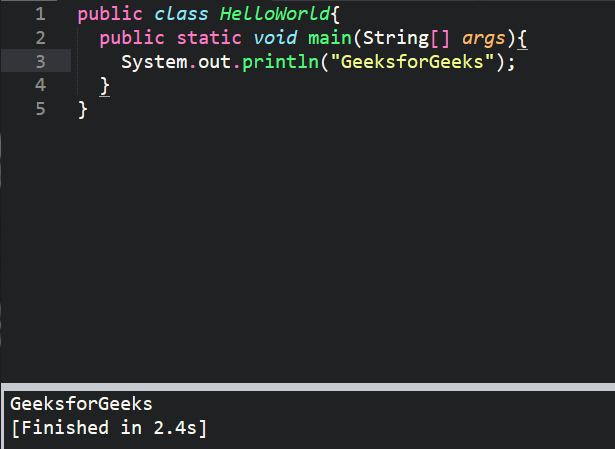

In the list of packages, select 'PackageDev'.In the Command Palette, select 'Package Control: Install Package'.I created a new syntax which defined a new scope - it was quite easy (like most things in Sublime):

The "scopeName" item allows you to name your new scope (i.e., "", etc.). The new syntax definition file doesn't actually have to define/match the file's syntax, as you can simply match by file extension.! Syntax definitions can declare new 'scope names' which you can then use in your new, custom build systems. It's possible, if you define a new syntax definition (i.e., a new. ST just is a editor, so you cannot use it as a input stream, you have to use a shell like bash, zsh. "cmd" : Īnd save this with extension *.sublime-build Anything else is a waste of my time, even for short, experimental stuff.įrom menu, choose Build -> New build system. "file_regex": "^(.*?):(*):?(*)",Īll this said, I never really do anything with console input in Java proper I do it via either a Groovy or JRuby REPL, or allow stubbing of input/output sources/destinations, or… but not in Java, and not from Sublime Text 2–I use an IDE for Java development. usr/X11/bin/xterm -e "/bin/bash -c "/usr/bin/java $3 echo 'Press ENTER to quit.' read line"" Nutshell (Simplification): compile and run through a shell script in order to get a new window.

My real version uses Ant or Maven, which solves many problems, but not all.My real version makes some assumptions that may or may not work for the rest of the world.I don't have a complete solution that's cross-OS or that takes weird directories into account.Package/project stuff is relatively straight-forward, but IMO awkward.Assumes: OS X, xterm, no package hierarchy, etc.Here's the "polite" (read: short and readable) version of what I did to make this work.


 0 kommentar(er)
0 kommentar(er)
